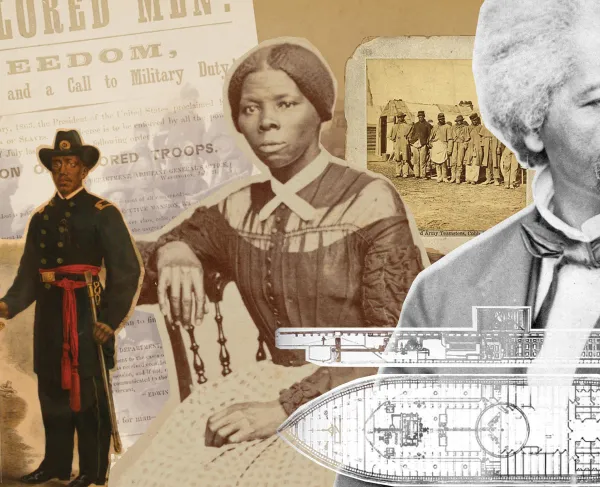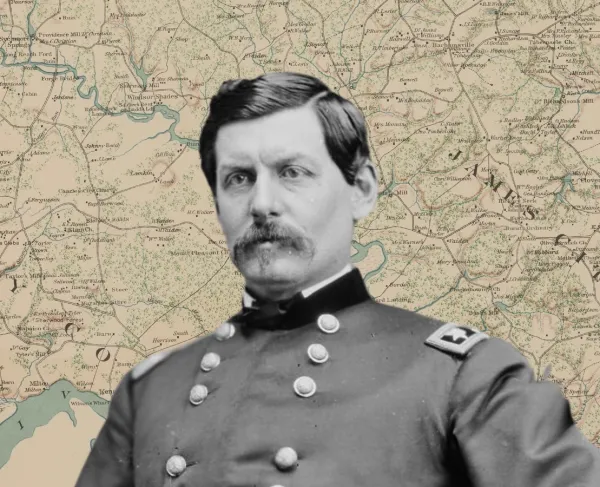
Gosport Navy Yard in March 1861, printed in Harper’s Weekly.
The Civil War’s best-known naval installation was the Gosport Navy Yard. Originally founded by Great Britain on the Elizabeth River, near Norfolk, Virginia, Gosport became a hub for the antebellum United States Navy. By April 1861, 1,400 contractors worked at Gosport, which held one of only three granite dry-docks in the United States, stored 1,085 artillery pieces, contained storehouses packed with maritime supplies and had 11 ships either anchored nearby, laid up in ordinary in a reserve status, or under construction.
Abraham Lincoln recognized Gosport’s importance. As the secession crisis grew, Navy Secretary Gideon Welles advised “it may be best to order most of the shipping to sea.” Precautions proved warranted, as Virginia secessionists concentrated on Gosport. Following the April 12, 1861, attack on Fort Sumter, but before Virginia officially seceded, Governor John Letcher ordered state forces to secure the yard.
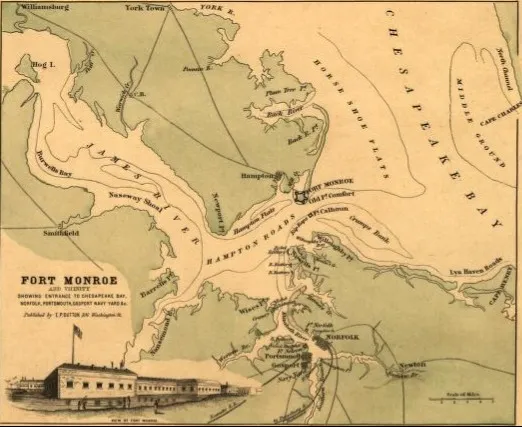
Captain Charles Stewart McCauley, commanding Gosport, had a herculean task, and saw enemies everywhere. Most of the yard’s 40 officers joined the Confederacy. Few enlisted sailors were available to man ships. Navy Constructor John L. Porter observed contractors, “standing in grounds about the Yard,” admitting “no one could work.
Federals rushed reinforcements, though McCauley was not informed of these efforts. Chief Engineer Benjamin Franklin Isherwood was dispatched to prepare vessels laying in ordinary for sea, including the steam frigate Merrimack. Captain Hiram Paulding and the steam sloop Pawnee steamed to Gosport with Marines. Elements of the 3rd Massachusetts volunteers arrived to guard against Rebel attack. On April 16, McCauley received a note from Welles ordering that “the vessels and stores under your charge you will defend at any hazard.”
The task proved overwhelming. On April 20, amid reports of arriving Virginia militia and an obstructed Elizabeth River, McCauley halted all plans. He ordered the yard destroyed and ships scuttled. Workshops were burned, but the dry-dock escaped destruction, as did many cannon, though their carriages were largely lost. The modern steam frigate Merrimack, sloop Plymouth, and brig Dolphin were scuttled and burned to the waterline. Ships of the line Pennsylvania, New York, Columbus, and Delaware were also burned or scuttled. The frigates Columbia and Raritan were burned, while the sloop Germantown was scuttled. The aged sailing ship of the line United States was simply abandoned. Only the sailing sloop Cumberland, tug Yankee, and steam sloop Pawnee escaped.
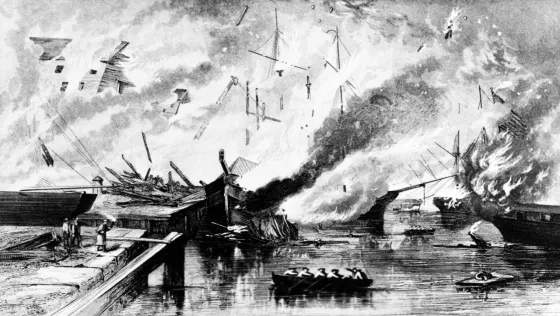
Virginia transferred Gosport to Confederate jurisdiction. Hundreds of captured artillery pieces were dispatched to fortifications and ships in Hampton Roads, Richmond, Charleston, Savannah, New Orleans and Memphis. Contractors returned to work outfitting Rebel warships, though workers who refused to take an oath of allegiance were jailed, with newspapers editorializing that any worker who “refuses to acknowledge his allegiance” to the Confederacy “deserves to be imprisoned.” The sunken and burned Merrimack was refloated and brought into Gosport’s dry-dock for conversion into an ironclad, while United States became a receiving ship for training Confederate sailors.
Confederates focused Gosport on Merrimack’s conversion. Yard workers cut away burned superstructure, engineers salvaged saltwater-corroded machinery, and architects designed an iron casemate and ram. Advertisements packed Virginia newspapers calling for machinists to join in hurrying work, though low pay and “disagreement with the naval officers” caused a brief strike in August, 1861. Even soldiers possessing mechanical training from nearby regiments were ordered to assist, some “without application or even desire.”
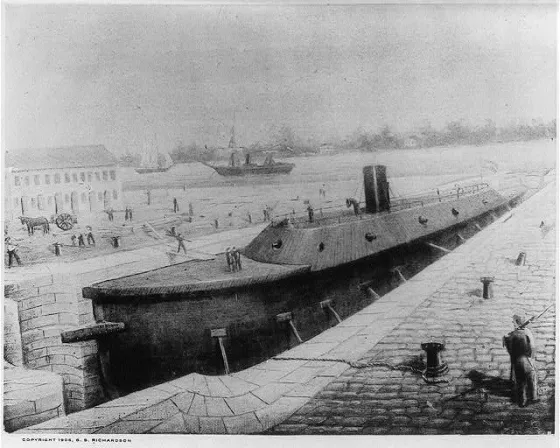
Despite delays, on March 8, 1862, escorted by several auxiliary war steamers, Flag Officer Franklin Buchanan took the rechristened CSS Virginia out to challenge the Federal blockade of Hampton Roads, sinking USS Cumberland, burning USS Congress, and capturing or destroying three army transports. When Virginia reemerged on March 9, it faced the turreted Monitor in the first dual of ironclads.
Following the Battle of Hampton Roads, Gosport’s workers repaired Virginia while beginning a second casemated ironclad, named Richmond. Meanwhile, Virginia guarded the Elizabeth River, daring Monitor to a rematch.
In early May, President Lincoln, visited Hampton Roads. Hoping to remove Virginia’s supply base by seizing Gosport, Lincoln personally organized an advance against Norfolk. 6,000 soldiers landed under a covering naval bombardment. Norfolk surrendered on May 10, 1862. Confederates hastily evacuated Gosport. The unfinished ironclad Richmond was towed up the James River to its namesake city. Contractors boarded trains for Charlotte, North Carolina, to build a new navy yard. Sailors attempted lightening CSS Virginia so it could ascend the James River, but the behemoth was ultimately destroyed to prevent its capture.
Confederates destroyed supplies in Gosport as they evacuated. They sunk the ship of the line United States as a river obstruction and fired storehouses and workshops. Just like Federal efforts in 1861, Confederates acted in haste, and the dry-dock again escaped complete destruction. “The loss of Norfolk is bad enough,” Lieutenant John M. Brooke lamented, but Gosport’s loss potentially put “the whole coast … in the hands of the enemy.”
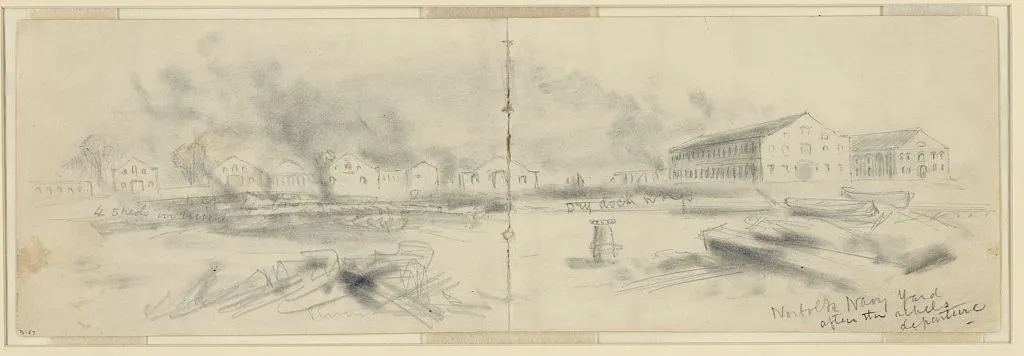
Again in United States hands, Gosport was unable to immediately function as a navy yard. Personnel and tools were required to clear river obstructions and reconstruct workshops. As the yard was rebuilt, Gosport provided smaller-scale repairs and support until 1864, when it became the primary repair facility for the North Atlantic Blockading Squadron.
By the end of the Civil War, Gosport became the Norfolk Navy Yard. Its mission continued after the Civil War, and today it remains one of the United States Navy’s most important repair facilities.
Related Battles
369
24

